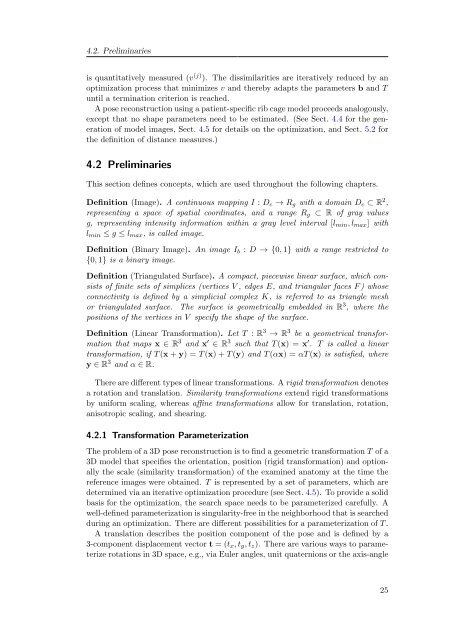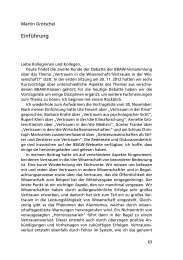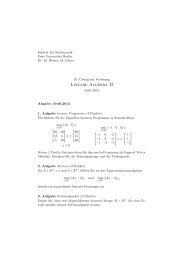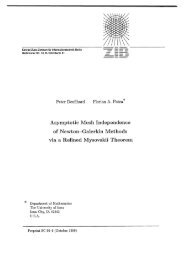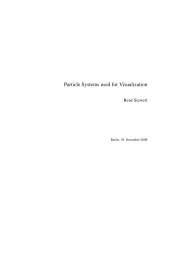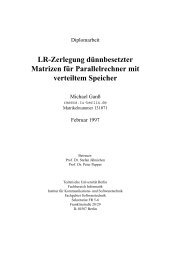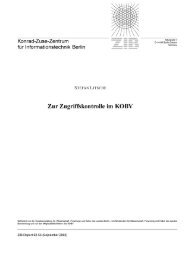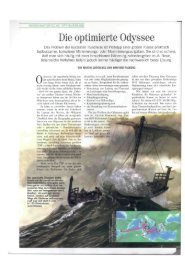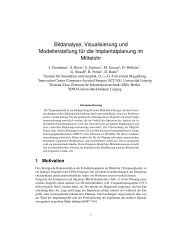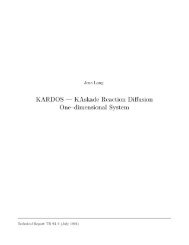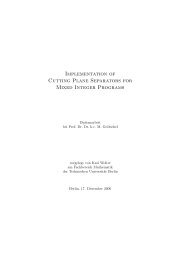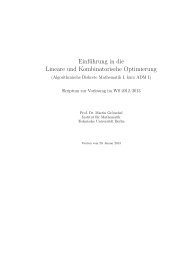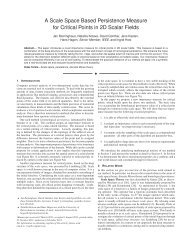3D Reconstruction of the Human Rib Cage from 2D Projection ... - ZIB
3D Reconstruction of the Human Rib Cage from 2D Projection ... - ZIB
3D Reconstruction of the Human Rib Cage from 2D Projection ... - ZIB
You also want an ePaper? Increase the reach of your titles
YUMPU automatically turns print PDFs into web optimized ePapers that Google loves.
4.2. Preliminaries<br />
is quantitatively measured (v (j) ). The dissimilarities are iteratively reduced by an<br />
optimization process that minimizes v and <strong>the</strong>reby adapts <strong>the</strong> parameters b and T<br />
until a termination criterion is reached.<br />
A pose reconstruction using a patient-specific rib cage model proceeds analogously,<br />
except that no shape parameters need to be estimated. (See Sect. 4.4 for <strong>the</strong> generation<br />
<strong>of</strong> model images, Sect. 4.5 for details on <strong>the</strong> optimization, and Sect. 5.2 for<br />
<strong>the</strong> definition <strong>of</strong> distance measures.)<br />
4.2 Preliminaries<br />
This section defines concepts, which are used throughout <strong>the</strong> following chapters.<br />
Definition (Image). A continuous mapping I : Dc → Rg with a domain Dc ⊂ R 2 ,<br />
representing a space <strong>of</strong> spatial coordinates, and a range Rg ⊂ R <strong>of</strong> gray values<br />
g, representing intensity information within a gray level interval [lmin, lmax] with<br />
lmin ≤ g ≤ lmax, is called image.<br />
Definition (Binary Image). An image Ib : D → {0, 1} with a range restricted to<br />
{0, 1} is a binary image.<br />
Definition (Triangulated Surface). A compact, piecewise linear surface, which consists<br />
<strong>of</strong> finite sets <strong>of</strong> simplices (vertices V , edges E, and triangular faces F ) whose<br />
connectivity is defined by a simplicial complex K, is referred to as triangle mesh<br />
or triangulated surface. The surface is geometrically embedded in R 3 , where <strong>the</strong><br />
positions <strong>of</strong> <strong>the</strong> vertices in V specify <strong>the</strong> shape <strong>of</strong> <strong>the</strong> surface.<br />
Definition (Linear Transformation). Let T : R 3 → R 3 be a geometrical transformation<br />
that maps x ∈ R 3 and x ′ ∈ R 3 such that T (x) = x ′ . T is called a linear<br />
transformation, if T (x + y) = T (x) + T (y) and T (αx) = αT (x) is satisfied, where<br />
y ∈ R 3 and α ∈ R.<br />
There are different types <strong>of</strong> linear transformations. A rigid transformation denotes<br />
a rotation and translation. Similarity transformations extend rigid transformations<br />
by uniform scaling, whereas affine transformations allow for translation, rotation,<br />
anisotropic scaling, and shearing.<br />
4.2.1 Transformation Parameterization<br />
The problem <strong>of</strong> a <strong>3D</strong> pose reconstruction is to find a geometric transformation T <strong>of</strong> a<br />
<strong>3D</strong> model that specifies <strong>the</strong> orientation, position (rigid transformation) and optionally<br />
<strong>the</strong> scale (similarity transformation) <strong>of</strong> <strong>the</strong> examined anatomy at <strong>the</strong> time <strong>the</strong><br />
reference images were obtained. T is represented by a set <strong>of</strong> parameters, which are<br />
determined via an iterative optimization procedure (see Sect. 4.5). To provide a solid<br />
basis for <strong>the</strong> optimization, <strong>the</strong> search space needs to be parameterized carefully. A<br />
well-defined parameterization is singularity-free in <strong>the</strong> neighborhood that is searched<br />
during an optimization. There are different possibilities for a parameterization <strong>of</strong> T .<br />
A translation describes <strong>the</strong> position component <strong>of</strong> <strong>the</strong> pose and is defined by a<br />
3-component displacement vector t = (tx, ty, tz). There are various ways to parameterize<br />
rotations in <strong>3D</strong> space, e.g., via Euler angles, unit quaternions or <strong>the</strong> axis-angle<br />
25


